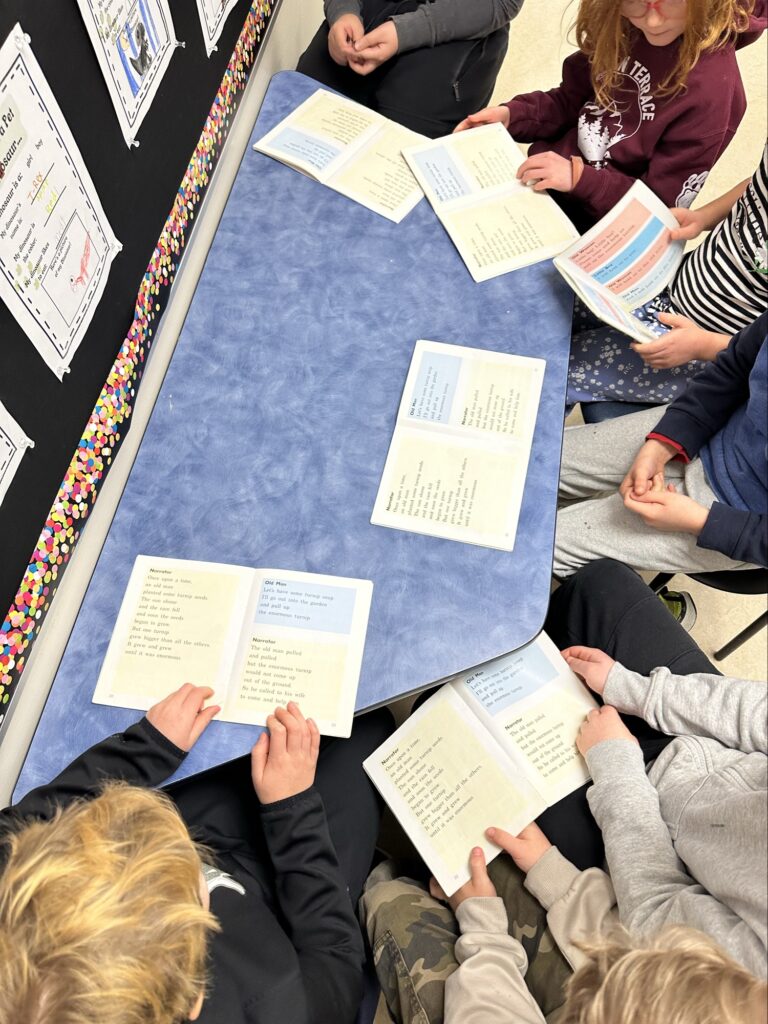Over the past few weeks our teacher candidate cohort has had the wonderful opportunity to visit one of the local elementary schools here in Cranbrook, BC. During our first three visits to Gordon Terrace Elementary, I had the opportunity to join a grade 3 class during their literacy centre and reader’s theatre.
The Big Ideas
- Curiosity and wonder lead us to new discoveries about ourselves and the world around us.
Our Tuesday mornings with the third graders started with breaking into literacy groups, where students were grouped depending on their reading level. This provided an opportunity for differentiated instruction, allowing all students to improve their skills with a book that they could enjoy and understand.
A third grade classroom is home to a variety of readers. Some readers are striving and others are thriving. Striving readers may still be in the process of decoding words on the page. As the textbook Sometimes Reading is Hard by Robin Bright describes, decoding is a fundamental building block of reading comprehension (p. 30). We as readers must first understand to read before we can read to understand.

2. Using language in creative and playful ways helps us understand how language works.
Following our time spent with the class during literacy centres, we collaborated with the young minds during reader’s theatre, which is a dramatic presentation and reading from a text involving multiple voices/actors. During our reading together, we brainstormed ways we could add emotion and emphasis to certain parts. The students enjoyed adding voices to their characters alongside the added emotion.
Curricular Competencies
- Engage actively as listeners, viewers, and readers, as appropriate, to develop understanding of self, identity, and community
Our small but mighty reading group of seven third graders did an excellent job of listening intently to one another, while also assisting with lines for their classmates when needed. As noted in Sometimes Reading is Hard, Reader’s Theatre is a great way to have everyone practice their reading fluency, no matter their level (p. 80). Characters and parts in the book will have varying amounts of spoken parts, making it easy to differentiate depending on reading level. Reader’s Theatre can also be a time for students to challenge themselves with a larger part! I was impressed to see a couple of striving readers volunteer for the main characters of the story.
2. Plan and create a variety of communication forms for different purposes and audiences
Reader’s Theatre is generally broken up into two parts: the practice and the performance. Before dividing students up into groups, the teacher will explain what Reader’s Theatre is and how it will help them improve their fluency and comprehension. Plus, it is a fun way to engage and interact with a story! Students will practice reading their parts with their groups a few times, allowing each student the ability to not only gain a deeper understanding of the content but to also work on speaking with expression and taking turns reading.
Content
- Reading Strategies: as students practice reading their parts together, they will be actively decoding, identifying sight words, and ensuring what they are saying makes grammatical and literal sense.
- Oral Language Strategies: Students will learn how to speak with emphasis and expression while taking turns and choral reading with their classmates.
- Features of Oral Language: Students will practice reading with varying tone, volume, inflection, pace, and certain gestures.
Personal Reflection
I quite enjoyed taking part and watching the grade 3s practice and present their stories to the rest of the class. I could tell each and every student took pride in their role, especially when reading aloud to their peers. The teacher also made a point to ask the class to comment on something positive they observed or liked about each group’s presentation, which is a great way to build confidence and a sense of community within their classroom.
Resources
Bright, R., 2021. Sometimes Reading Is Hard, Pembroke Publishers. Markham, CA. Retrieved from https://coilink.org/20.500.12592/jxm425 on 14 Mar 2025. COI: 20.500.12592/jxm425.